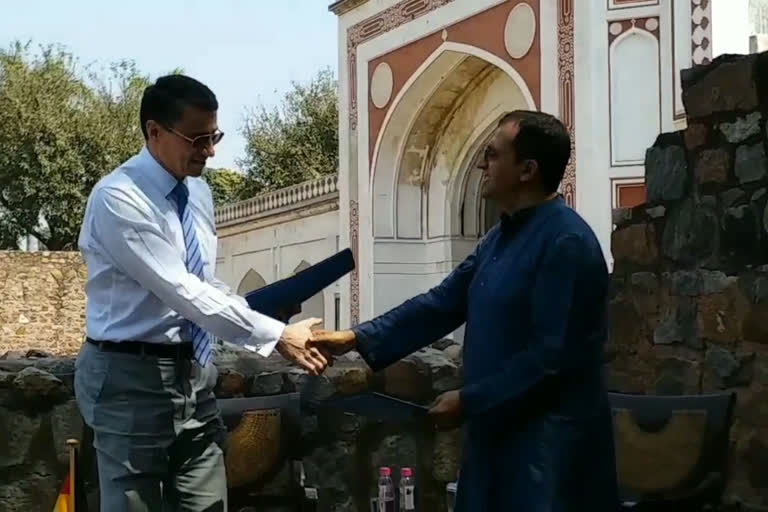New Delhi: German Ambassador to India Martin Ney on Tuesday signed an MoU with the Aga Khan Trust for the restoration of Arab Ki Sarai Baoli in the Humayun Tomb complex here.
The German Embassy contributed Rs 41.5 lakh for the restoration of Arab Ki Sarai baoli.
Martin Ney said the man-made ponds (baolis) were of great importance in India’s history. The Arab Ki Sarai Baoli is currently in a deteriorating condition.
"Master craftsmen will undertake the conservation works – stone carvers and masons, who very importantly, will be using traditional tools, building crafts and materials," he said.
Ney said the restoration of cultural heritage sites has a positive impact on tourism. "I am quite sure that after the Baoli has been restored to its original appearance, it will be a great place for local and foreign tourists," he said.
Arab Ki Sarai is situated within the premise of Humayun's Tomb Complex and its lawns contain the Afsarwala Tomb and Mosque.
According to the Indian National Trust for Art and Cultural Heritage (INTACH) listing of ancient structures in New Delhi, Arab Sarai was built in 1560 AD by Hamida Banu Begum, who was the chief consort of Mughal emperor Humayun, to accommodate 300 Arabs she had brought back from Mecca.
It is divided into two quadrangles by a series of cells provided with a gateway in the centre. Immediately outside, its lofty eastern entrance, approached by a gateway from the east, is the second quadrangle, originally bounded by arched cells, known as mandi (market).
Read:Two women held by customs for smuggling Forex at Delhi airport



